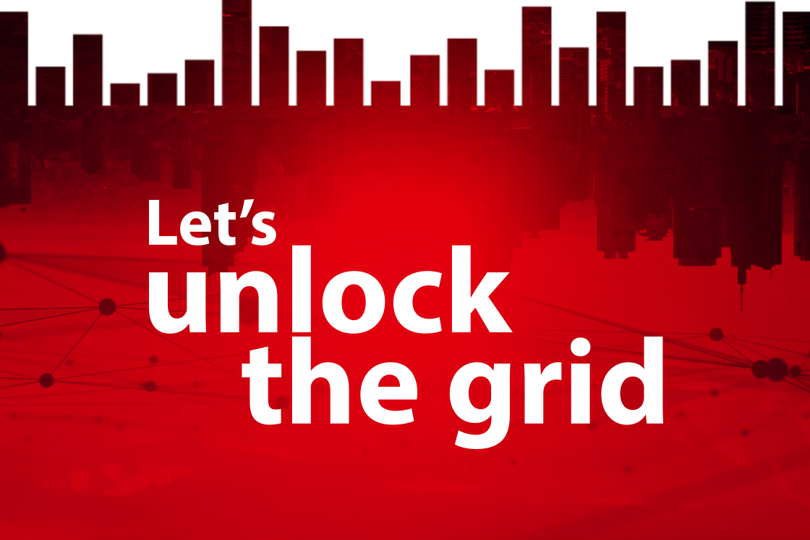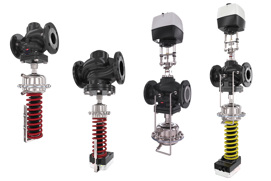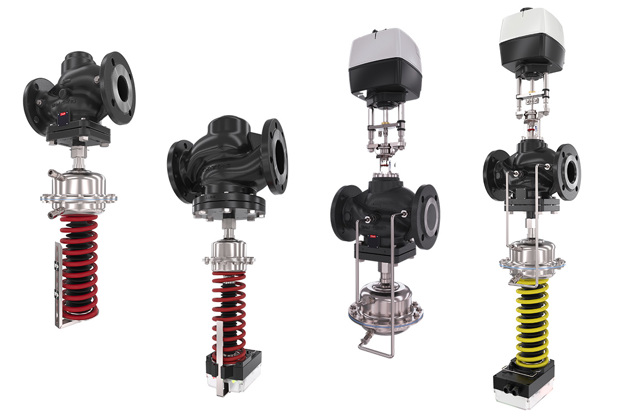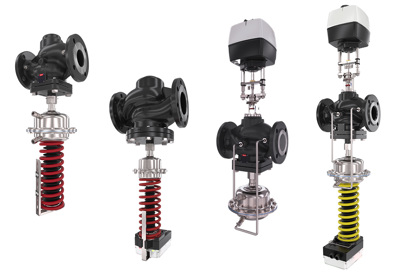
Navigating challenges in the sustainability transformation of District Heating
As district heating networks transition towards decentralized and renewable energy sources, operational challenges are increasing.
Discover how one of Germany’s largest district heating networks manages increasing operational complexity with the help of Danfoss’ Virtus heavy-duty pressure and flow controllers. This approach results in a more efficient, stable operation and significant cost savings.
Introduction
Advancing District Heating in the Lower Rhine Region
Fernwärmeverbund Niederrhein Duisburg/Dinslaken GmbH & Co. KG is a cooperative venture between Stadtwerke Duisburg AG and Stadtwerke Dinslaken GmbH, and has been a pioneer in sustainable district heating for over four decades. With the construction of the Niederrhein district heating network between 1980 and 1984, it became one of the first interconnected district heating systems in Germany, enabling the use of industrial waste heat for domestic heating and hot water supply.
Today, the heating network spans approximately 40 km and supplies several distribution networks totaling 700 km in length through network stations. Each year around 980 million kilowatt-hours of thermal energy is distributed, which equates to the needs of more than 168,500 households across the cities of Dinslaken, Voerde, Duisburg and Moers.
In addition to heat from chemical production and steel manufacturing, the use of heat energy from biomethane-based combined heat and power plants, biomass facilities utilizing wood chips, and energy recovery from reclaimed wood is increasingly common. The purchase of district heating from the coal-fired power plant in Duisburg-Walsum was discontinued in 2022.
Of the 980 million kWh of heat distributed annually, more than 50% currently comes from renewable sources, and by 2030, this figure is expected to exceed 80%, significantly surpassing the current national average of 20%.
However, the shift from centralized fossil fuel power plants to decentralized renewable heat sources through sector coupling has introduced new operational complexities, requiring innovative solutions.
Solution
Intelligent Flow Control with Danfoss Virtus
To stabilize network operations, Fernwärmeverbund Niederrhein decided to gradually modernize their network stations and installing Danfoss Virtus heavy-duty differential pressure and flow controllers. In alignment with Danfoss they selected the highly innovative pressure independent control valve AFQMP 2 with corresponding AME 655 and AMEi 6 actuators.
These advanced controllers:
- Detect low-load oscillations and autonomously adjust valve settings for optimal flow conditions.
- Adapt dynamically to varying differential pressure and load conditions, maintaining stability across changing demands.
- Enable remote control (with iSET adaption to iNET mode) for even greater precision and flexibility.
- Reduce the need for oversized valves – DN 150 proved sufficient where other solutions required DN 200, offering substantial cost savings.
- Ensure year-round operation with a single valve type, eliminating seasonal adjustments.
- Meet DIN EN 14 597 safety standards, ensuring safe operation in critical district heating environments.
Results
Stabilized Operations and Cost Savings
Since the installation of Danfoss Virtus AFQMP 2 controllers, the three upgraded network stations in Dinslaken and Duisburg have reported:
✓ Significant reduction of oscillation issues, leading to stable flow
control.
✓ More consistent temperatures in municipal distribution networks.
✓ Lower return temperatures, enhancing overall efficiency.
✓ Reduced operational costs by optimizing hydronic performance.
✓ Seamless integration into digital grid management, paving the
way for further modernization.
Encouraged by these results at three of their stations, Stadtwerke Dinslaken is now gradually implementing the solution in all their other network stations.
In addition, plans are made to install the Virtus AFQMP 2 solution in all of the Fernwärme verbund Niederrhein interconnected network stations by 2028.
Future steps
A Scalable Model for Smart District Heating
The implementation of intelligent hydronic control is an important step towards district heating networks that remain efficient and resilient, even with decentralized energy sources, thereby facilitating the comprehensive integration of renewable energy sources into district heating supply.
The installation of intelligent Danfoss Virtus controllers with iSET actuators also enables seamless integration of network stations into digital grid management, paving the way for further modernizations.
Fernwärmeverbund Duisburg/Dinslaken GmbH & Co. KG is setting benchmarks for hydronically optimized district heating supply with this solution.
To efectively manage today’s increasingly complex district heating networks, we need innovative approaches like Danfoss’.
Our technicians are very satisfed, and the service has convinced us completely.
Related products
-
if (isSmallPicture) {


 Virtus | Heavy-duty Pressure and Flow Controllers
Virtus | Heavy-duty Pressure and Flow ControllersA new generation of Virtus intelligent ready pressure and flow controllers are here to ensure high durability, improved functionality and performance in district energy networks balancing. In addition, unique intelligent optimization functions iNET and iSET will save even more energy.

Unlock the grid to its full potential
We can help utilities to optimize their supply of district heating to cities with a positive impact on decarbonization and reduced energy consumption. It's time to unlock the grid's full potential for ultimate cost-effectiveness, energy-efficiency and a resilient path to a greener future.
Challenge
Managing Complexity in a Decentralized Network
The shift to and expansion with smaller, decentralized renewable energy sources has increased the complexity of pressure, temperature, and flow conditions within the network. In addition to the volatile availability of unavoidable industrial waste heat, which can fluctuate between 0 and 70 MW within just a few minutes, the increase of feed-in points compounded these challenges.
Especially at the different network stations, where up to 60 MW of heat output is decoupled from the network into the distribution networks, the existing valve and control technology struggled to maintain stability, leading to oscillations in differential pressure and volume flow regulation. This resulted in unstable temperatures, suboptimal station alignment, and inefficiencies in pump operations – ultimately impacting network reliability, end-user comfort and increasing operational costs.



